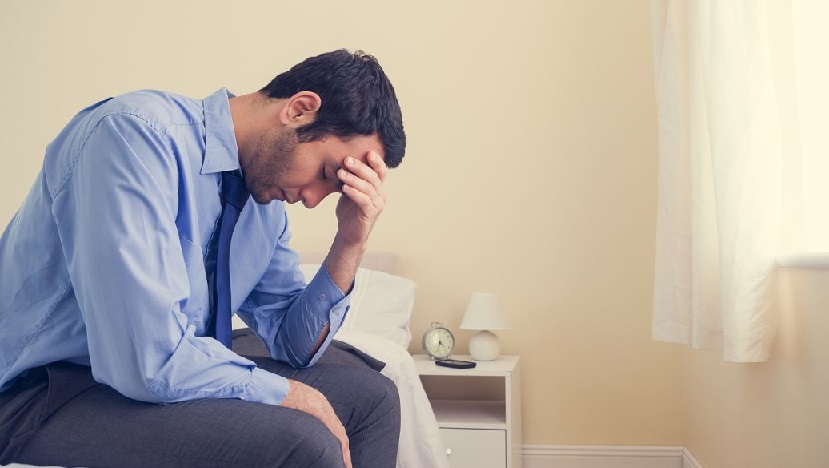
Premature ejaculation (PE) is a common male sexual dysfunction characterized by ejaculation that occurs with minimal sexual stimulation before, on, or shortly after penetration, leading to distress for the individual and their partner. This report examines the relationship between premature ejaculation and age, focusing on prevalence, underlying physiological and psychological factors, and the impact of age-related changes on sexual function.
Introduction
Premature ejaculation is one of the most prevalent sexual dysfunctions among men, affecting men of all ages. However, the incidence and experience of PE may vary significantly with age. Understanding this relationship is critical for developing effective treatment options and improving sexual health outcomes.
Prevalence of Premature Ejaculation Across Age Groups
※Young Adults (18-30 years)
Research indicates that PE is particularly common among younger men, with prevalence rates ranging from 20% to 30%. Factors contributing to this high prevalence include:
- Anxiety and Stress: Young men often face significant performance anxiety, which can exacerbate symptoms of PE.
- Inexperience: Lack of sexual experience may lead to heightened sensitivity and increased likelihood of early ejaculation.
※Middle-Aged Adults (31-50 years)
The prevalence of PE tends to decrease in middle-aged men, with estimates between 10% and 20%. Contributing factors include:
- Increased Confidence: Greater sexual experience may reduce anxiety, leading to improved control over ejaculation.
- Health Factors: The onset of health issues such as cardiovascular disease or diabetes, which can affect sexual function, may begin to appear in this age group.
※Older Adults (51+ years)
In older adults, the prevalence of PE can vary significantly, with some studies reporting rates similar to younger populations, while others suggest a decrease in incidence. Factors influencing this variation include:
- Physical Changes: Age-related physiological changes, such as reduced testosterone levels, may lead to changes in sexual function.
- Psychological Factors: Older men may experience different psychological stressors, including relationship changes and body image concerns.
Physiological and Psychological Factors
Physiological Factors
- Hormonal Changes: Testosterone levels naturally decline with age, which can affect sexual desire and performance.
- Neurological Factors: Sensitivity of the nerves responsible for ejaculation may change with age, influencing the timing of ejaculation.
- Health Conditions: Conditions such as prostate issues or diabetes can affect ejaculatory control.
Psychological Factors
- Performance Anxiety: Younger men may experience more anxiety regarding sexual performance, while older men might face anxiety related to body image or relationship dynamics.
- Relationship Dynamics: Changes in relationships over time can impact sexual satisfaction and ejaculatory control, with both younger and older men experiencing relationship-related stress.
Discussion
The relationship between premature ejaculation and age is complex and influenced by a variety of factors. While younger men may face higher prevalence due to anxiety and inexperience, middle-aged men often benefit from increased confidence and experience. In older men, while some may experience PE due to physical changes or health conditions, others may have reduced anxiety, contributing to varied experiences of sexual dysfunction.
Common Treating PE Methods Tailored for Different Age Groups
※Young Adults (18-30 years)
Behavioral Techniques
- Start-Stop Technique: Involves stopping sexual stimulation before ejaculation and starting again once the urge decreases.
- Squeeze Technique: Pressing the base of the penis before ejaculation to delay climax.
Psychological Counseling
- Therapy to address performance anxiety and improve sexual confidence.
Topical Anesthetics
- Delay creams or sprays containing lidocaine or benzocaine to reduce sensitivity.
※Middle-Aged Adults (31-50 years)
Medications
- Selective Serotonin Reuptake Inhibitors (SSRIs): Such as sertraline or paroxetine, which can delay ejaculation.
- Tramadol: An off-label use for its potential to delay ejaculation.
Combination Therapy
- A mix of behavioral techniques and medications for a more comprehensive approach.
Couples Therapy
- Addressing relationship dynamics and improving communication.
※Older Adults (51+ years)
Medications
- Continuing with SSRIs or considering phosphodiesterase type 5 inhibitors (e.g., sildenafil) if there are concurrent erectile issues.
Hormonal Therapy
- If low testosterone levels are identified, hormone replacement therapy may be considered.
Pelvic Floor Exercises
- Kegel exercises to strengthen pelvic muscles and improve control.
Lifestyle Changes
- Regular exercise and a healthy diet to improve overall sexual health.
※General Approaches for All Ages
- Education and Awareness: Understanding that PE is a common issue can reduce anxiety.
- Lifestyle Modifications: Reducing alcohol consumption and managing stress can be beneficial.
- Open Communication: Discussing the issue with a partner can alleviate anxiety and improve intimacy.
NOTE: It’s important for individuals to consult healthcare professionals to determine the best treatment plan based on their specific circumstances and age-related factors.
Conclusion
Premature ejaculation is a multifaceted issue that evolves with age. Understanding these dynamics is essential for healthcare providers to tailor interventions effectively. The author hopes that future research will focus on longitudinal studies tracking changes in PE across different age groups, while considering physiological and psychological factors.
